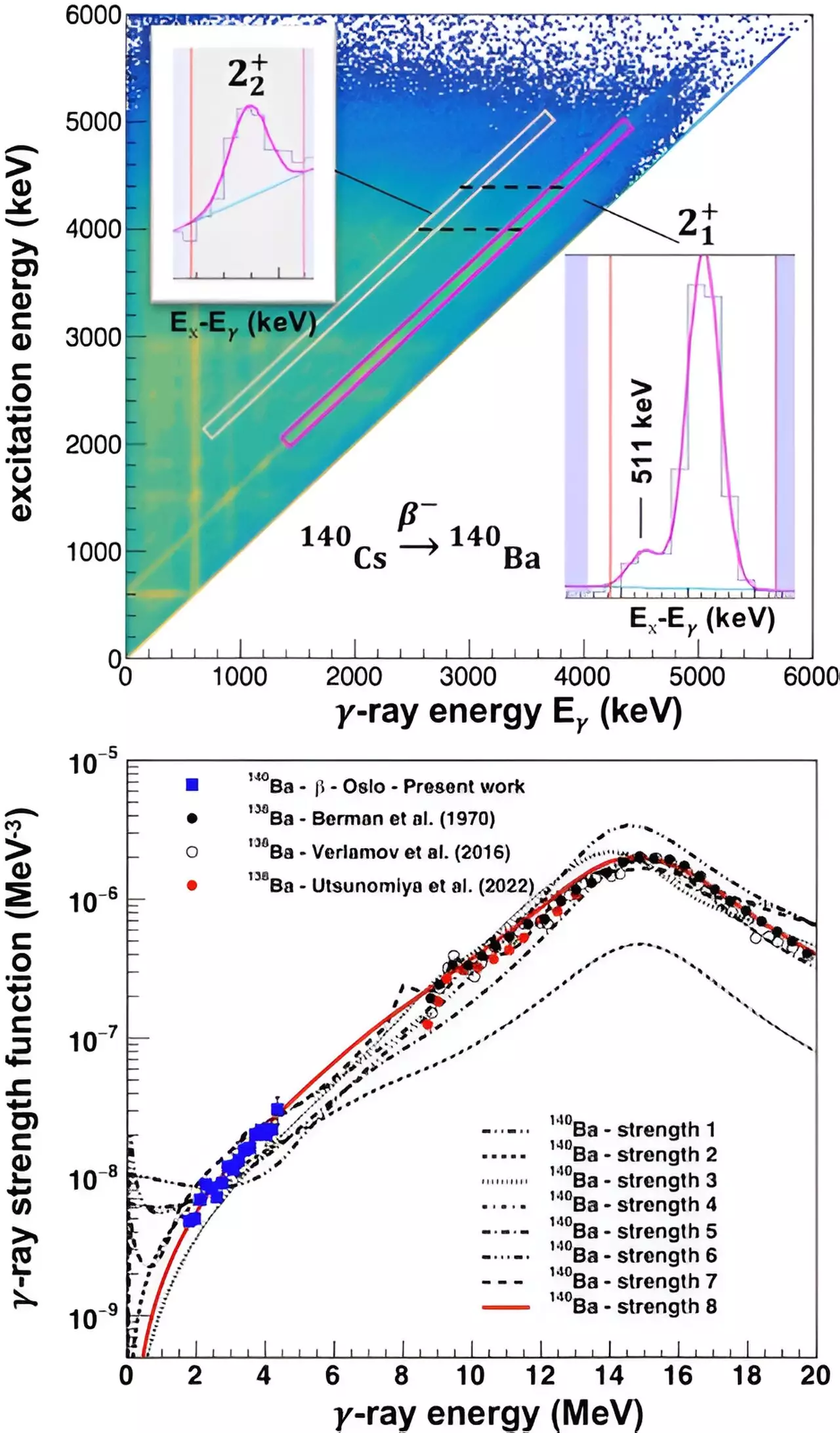Understanding the lifecycle of stars and their role in the creation of elements is a monumental task that has intrigued astronomers for centuries. The marriage of astrophysics and nuclear physics sheds light on the processes that dictate both the birth and death of stars, offering deep insights into the chemical composition of the universe. Recent breakthroughs in experimental research have provided clarity on some of the heavy elements produced in stars, revealing complexities that reshape our fundamental understanding of these cosmic entities.
Stars originate from vast clouds of gas and dust in space, where gravitational forces cause these materials to coalesce. As the dense regions collapse under gravity, they heat up, eventually leading to nuclear fusion—the process that powers stars for billions of years. This process is not dependent on a single mechanism; instead, it showcases a range of pathways and interactions within stellar interiors. Stars go through various stages, from protostars to main-sequence stars, and eventually to either supernovae or the quieter fade of red giants. Each phase plays a pivotal role in the cosmos’ ongoing alchemical reactions, transforming simpler elements into heavier ones through nuclear fusion.
Conversely, a star’s death is equally fascinating. It often culminates in a spectacular explosion known as a supernova, where the outer layers are expelled, enriching the interstellar medium with heavy elements. This cycle of life and death illustrates how stars act as the universe’s crucibles, forging the materials needed for planets and life itself.
At the heart of stellar nucleosynthesis lies a nuanced interplay between rapid and slow processes of element formation. Historically, scientists classified nucleosynthesis into two primary categories: the rapid “r-process” and the slower “s-process.” The r-process occurs in explosive environments such as supernovae and neutron star mergers, resulting in the rapid creation of heavy elements through neutron capture. In contrast, the s-process unfolds in the cooler environments of aging stars, where slower neutron captures enable the gradual buildup of heavier nuclei over time.
Emerging research, however, has suggested a third mechanism: the intermediate “i-process.” Observations of ancient stars with unexpected elemental compositions have prompted astrophysicists to consider this alternative pathway, which appears to bridge the characteristics of the r- and s-processes. This development indicates a more complex landscape of nucleosynthesis than previously understood, emphasizing the diversity of stellar environments and their contributions to cosmic evolution.
A recent collaborative effort between scientists from the United States and Europe has significantly advanced our understanding of nucleosynthesis pathways for heavy elements, particularly barium isotopes. This research produced the first experimental constraints on neutron capture rates involving barium-139 transitioning to barium-140. Such findings can help decipher the mechanisms behind various elemental abundances observed in the universe.
Utilizing the CARIBU facility at Argonne National Laboratory, researchers employed advanced experimental techniques to measure the decay of cesium-140 into barium-140, ultimately linking the newly captured data to the elusive neutron capture rates of barium-139. Their work underscores the necessity of high-intensity and high-purity radioactive beams to explore these phenomena effectively.
These advancements in our understanding of stellar nucleosynthesis are more than mere scientific curiosity; they have profound implications for how we perceive the cosmos and our place within it. Elements formed in the hearts of exploding stars are essential components of planets, life forms, and the very atmosphere we breathe. By unraveling the complexities of how these elements are forged, we open doors to greater insights into both the origins of the universe and the fundamental processes that govern it.
As research continues into neutron-rich isotopes and their role in cosmological nucleosynthesis, scientists anticipate further revelations that challenge and refine their existing models. With ongoing projects such as nuCARIBU set to enhance experimental capabilities, the future of astrophysics promises to provide even deeper insights into the enchanting processes of stellar birth, evolution, and death.
As the quest to understand stellar processes continues, we are reminded of the vastness of knowledge still to be uncovered. Each study, such as the one led by prominent astrophysicists like Artemis Spyrou and Dennis Mücher, contributes vital pieces to the grand cosmic puzzle, propelling humanity’s understanding of our universe. The investigation into the intricacies of how elements are born in the heart of stars not only illuminates the history of the universe but also redefines our appreciation of the intricate connections between matter and energy that sustain life itself. The work is far from finished, and with every discovery, new questions arise, beckoning further exploration into the realms of space and time.


Leave a Reply